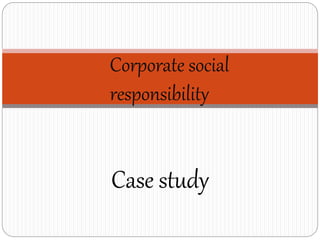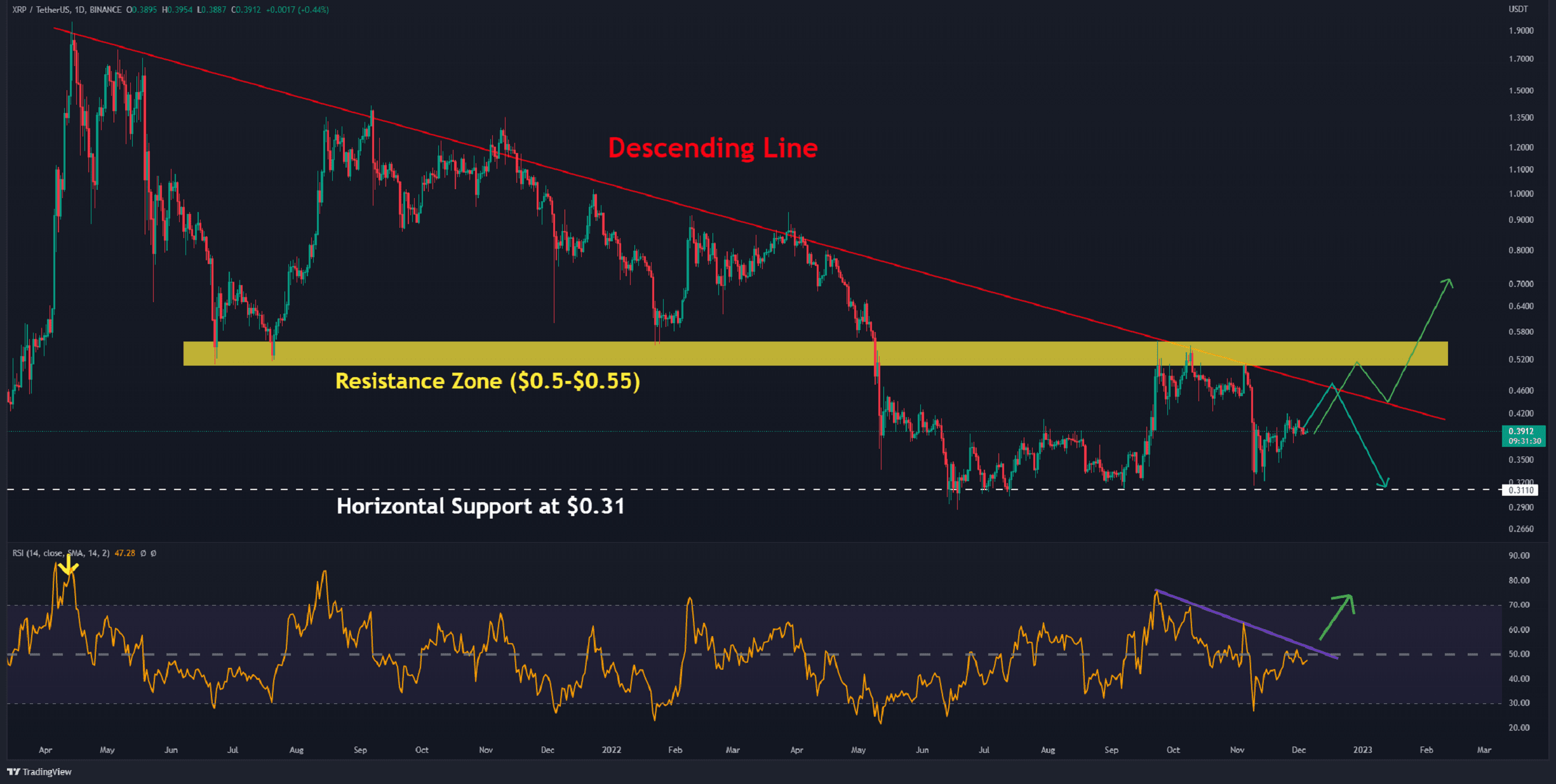The Target DEI Story: A Case Study In Corporate Social Responsibility Evolution

Table of Contents
Target's Early DEI Initiatives
Early Efforts and Challenges
Target's early DEI efforts, like many corporations in the late 20th and early 21st centuries, were somewhat reactive and lacked the strategic focus seen today. Initial initiatives often focused on compliance with existing legislation regarding equal opportunity employment. Challenges included:
- Lack of robust data collection: Accurate measurement of diversity representation was limited, hindering effective progress tracking.
- Limited internal resources dedicated to DEI: Early programs often lacked dedicated staff and funding, resulting in slow implementation and limited impact.
- Insufficient employee engagement: Early initiatives sometimes failed to engage employees effectively, resulting in a lack of buy-in and ownership.
- Societal perceptions of DEI: Early efforts were also influenced by the prevailing societal understanding of DEI, which often focused on simple compliance rather than a deep-rooted cultural shift.
Analyzing the Initial Impact
The impact of Target's early DEI initiatives was mixed. While some progress was made in increasing representation in certain areas, overall effectiveness was limited. Quantitative data from this period is scarce, but qualitative feedback suggests a lack of widespread awareness and buy-in amongst employees. Internal critiques centered on the perception of these early programs as superficial and insufficient to address deeply rooted systemic inequalities. The lack of measurable outcomes also hindered the ability to demonstrate a clear return on investment, impacting future resource allocation.
Evolution of Target's DEI Strategy
Shifting Priorities and Approaches
Target's DEI strategy has undergone significant evolution, moving from a compliance-focused approach to a more proactive and strategic one. This shift was driven by several factors:
- Increased societal awareness of social justice issues: The growing national conversation around racial justice and LGBTQ+ rights significantly impacted Target's approach.
- Evolving business needs: Target recognized the business imperative of building a diverse and inclusive workforce to better serve its diverse customer base.
- Stronger internal advocacy: Employee resource groups and internal advocacy played a crucial role in pushing for more ambitious DEI goals.
This led to increased investment in comprehensive programs, partnerships with external organizations, and leadership commitment to DEI.
Focus on Specific DEI Pillars
Target's current DEI strategy focuses on several key pillars:
- Racial Equity: Target has implemented programs aimed at increasing representation of Black, Indigenous, and People of Color (BIPOC) employees at all levels, including targeted recruitment, leadership development, and mentorship initiatives.
- Gender Equality: Efforts include closing the gender pay gap, increasing female representation in leadership, and promoting family-friendly policies.
- LGBTQ+ Inclusion: Target actively supports LGBTQ+ employees through employee resource groups, inclusive benefits, and partnerships with LGBTQ+ organizations.
- Disability Inclusion: Initiatives focus on creating an accessible workplace and increasing the representation of employees with disabilities.
Each pillar incorporates specific, measurable targets and regular progress reports, ensuring accountability and transparency.
Measuring the Success of Target's DEI Initiatives
Quantitative Metrics
Measuring the success of Target's DEI initiatives involves analyzing various quantitative metrics. While precise figures aren't publicly available for all areas, Target reports progress in areas like:
- Increased representation of underrepresented groups: Target publishes diversity data on its workforce composition, showcasing progress toward achieving its representation goals.
- Supplier diversity: Target actively engages with diverse suppliers, contributing to economic empowerment within communities.
- Community engagement: Target supports various community initiatives focused on promoting diversity and inclusion.
Analyzing these metrics against industry benchmarks allows for a more comprehensive evaluation of Target's progress.
Qualitative Assessments
Qualitative data offers valuable insights into the impact of Target's DEI initiatives:
- Employee surveys and feedback: Regular employee surveys gauge satisfaction, inclusion, and perceptions of workplace equity.
- Customer perception studies: Research explores how Target's DEI commitments resonate with its diverse customer base.
- Media coverage and brand reputation analysis: Positive media coverage reflecting Target's DEI efforts strengthens its brand reputation.
Target's DEI Strategy as a Model for Corporate Social Responsibility
Lessons Learned and Best Practices
Target's DEI journey offers several valuable lessons for other organizations:
- Strategic planning is crucial: A comprehensive DEI strategy requires clear goals, measurable targets, and dedicated resources.
- Leadership commitment is essential: Strong leadership support is vital for driving change and fostering a culture of inclusion.
- Transparency and accountability are key: Regular reporting and public disclosure of progress build trust and demonstrate commitment.
- Continuous improvement is necessary: DEI is an ongoing process requiring continuous evaluation, adaptation, and improvement.
The Business Case for DEI
Target's commitment to DEI is not just ethically responsible; it's also strategically sound. A diverse and inclusive workforce enhances:
- Innovation and creativity: Diverse perspectives lead to more innovative solutions and better decision-making.
- Employee engagement and retention: Employees are more engaged and loyal when they feel valued and included.
- Brand reputation and customer loyalty: Consumers increasingly favor companies committed to social responsibility.
- Financial performance: Studies show a positive correlation between DEI and financial performance.
Conclusion
Target's journey in Diversity, Equity, and Inclusion demonstrates a significant evolution from compliance-based initiatives to a proactive, strategically driven approach. While challenges remain, Target's commitment to transparency, accountability, and continuous improvement has yielded positive results across various metrics, highlighting the business case for robust DEI programs. By studying Target's evolving DEI strategy, businesses can gain valuable insights and develop effective strategies to foster a more inclusive and equitable workplace. Learn more about Target's commitment to DEI by visiting their official website [insert link here].

Featured Posts
-
 Aplicativo De Ia Da Meta Uma Alternativa Ao Chat Gpt
May 01, 2025
Aplicativo De Ia Da Meta Uma Alternativa Ao Chat Gpt
May 01, 2025 -
 Xrp Price Surge Ripple Sec Case Update And Etf Speculation
May 01, 2025
Xrp Price Surge Ripple Sec Case Update And Etf Speculation
May 01, 2025 -
 Michael Sheens Million Pound Giveaway Details Revealed
May 01, 2025
Michael Sheens Million Pound Giveaway Details Revealed
May 01, 2025 -
 Rugby Six Nations France Sends Warning To Ireland
May 01, 2025
Rugby Six Nations France Sends Warning To Ireland
May 01, 2025 -
 Lady Raiders Home Game Recap Cincinnati Victory 59 56
May 01, 2025
Lady Raiders Home Game Recap Cincinnati Victory 59 56
May 01, 2025
Latest Posts
-
 Xrp Price Surge After Ripple Sec Settlement Market Reaction And Future Outlook
May 01, 2025
Xrp Price Surge After Ripple Sec Settlement Market Reaction And Future Outlook
May 01, 2025 -
 50 M Settlement Reached Analyzing The Ripple Sec Case And Xrps Trajectory
May 01, 2025
50 M Settlement Reached Analyzing The Ripple Sec Case And Xrps Trajectory
May 01, 2025 -
 Ripple Vs Sec The Impact Of The 50 M Settlement On Xrps Future
May 01, 2025
Ripple Vs Sec The Impact Of The 50 M Settlement On Xrps Future
May 01, 2025 -
 Ripple Wins Reduced 50 M Sec Settlement Xrp Price Prediction And Analysis
May 01, 2025
Ripple Wins Reduced 50 M Sec Settlement Xrp Price Prediction And Analysis
May 01, 2025 -
 Xrp News Ripples 50 M Sec Settlement Whats Next For Xrp
May 01, 2025
Xrp News Ripples 50 M Sec Settlement Whats Next For Xrp
May 01, 2025
